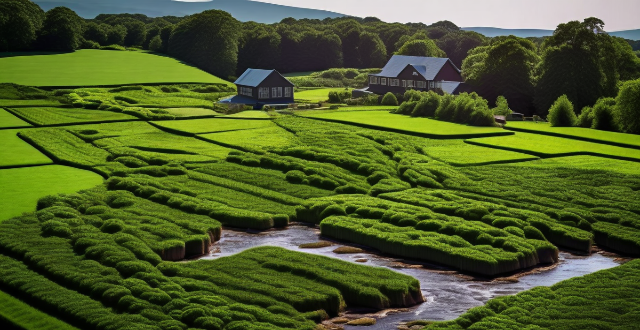Climate change has significant consequences for wildlife and ecosystems, including habitat loss, changes in species distribution, impacts on biodiversity, altered ecological processes, invasive species spread, pest outbreaks, and human health risks. It is crucial to take action to mitigate these impacts by reducing greenhouse gas emissions and implementing conservation measures.

The Consequences of Climate Change for Wildlife and Ecosystems
Climate change is one of the most significant challenges facing wildlife and ecosystems today. The consequences of climate change are far-reaching and complex, affecting species and ecosystems in various ways. Here are some of the key consequences:
Habitat Loss and Fragmentation
One of the most immediate impacts of climate change on wildlife is habitat loss and fragmentation. As temperatures rise, many species are forced to move to higher elevations or latitudes to find suitable conditions. This can lead to habitat loss as species compete for limited resources in new areas. Additionally, as habitats become more fragmented, it becomes more difficult for species to move between them, leading to further declines in populations.
Changes in Species Distribution and Abundance
Climate change can also cause shifts in the distribution and abundance of species. Some species may expand their ranges into new areas, while others may decline or even go extinct due to changing environmental conditions. These changes can have cascading effects throughout ecosystems, altering food webs and disrupting ecological processes.
Impacts on Biodiversity
Climate change has the potential to significantly reduce biodiversity by causing widespread extinctions and reducing genetic diversity within populations. As species are forced to adapt to new environmental conditions, they may not be able to keep up with rapid changes, leading to declines in population sizes and eventual extinction.
Altered Ecological Processes
Climate change can also alter ecological processes such as nutrient cycling, water availability, and fire regimes. For example, warmer temperatures can increase evaporation rates, leading to reduced water availability for plants and animals. Changes in precipitation patterns can also affect nutrient cycling and soil quality, which can have long-term impacts on ecosystem health.
Invasive Species and Pest Outbreaks
Climate change can facilitate the spread of invasive species and pest outbreaks by creating more favorable conditions for their growth and reproduction. Invasive species can outcompete native species for resources, leading to declines in biodiversity and disruption of ecological processes. Pest outbreaks can also have significant economic impacts on industries such as agriculture and forestry.
Human Health Risks
Finally, climate change can pose risks to human health through its impacts on wildlife and ecosystems. For example, changes in disease vectors (such as mosquitoes) can lead to increased transmission of diseases like malaria and Lyme disease. Additionally, declines in pollinator populations can threaten food security by reducing crop yields.
In conclusion, the consequences of climate change for wildlife and ecosystems are diverse and complex. It is essential that we take action to mitigate these impacts by reducing greenhouse gas emissions and implementing conservation measures to protect vulnerable species and ecosystems.